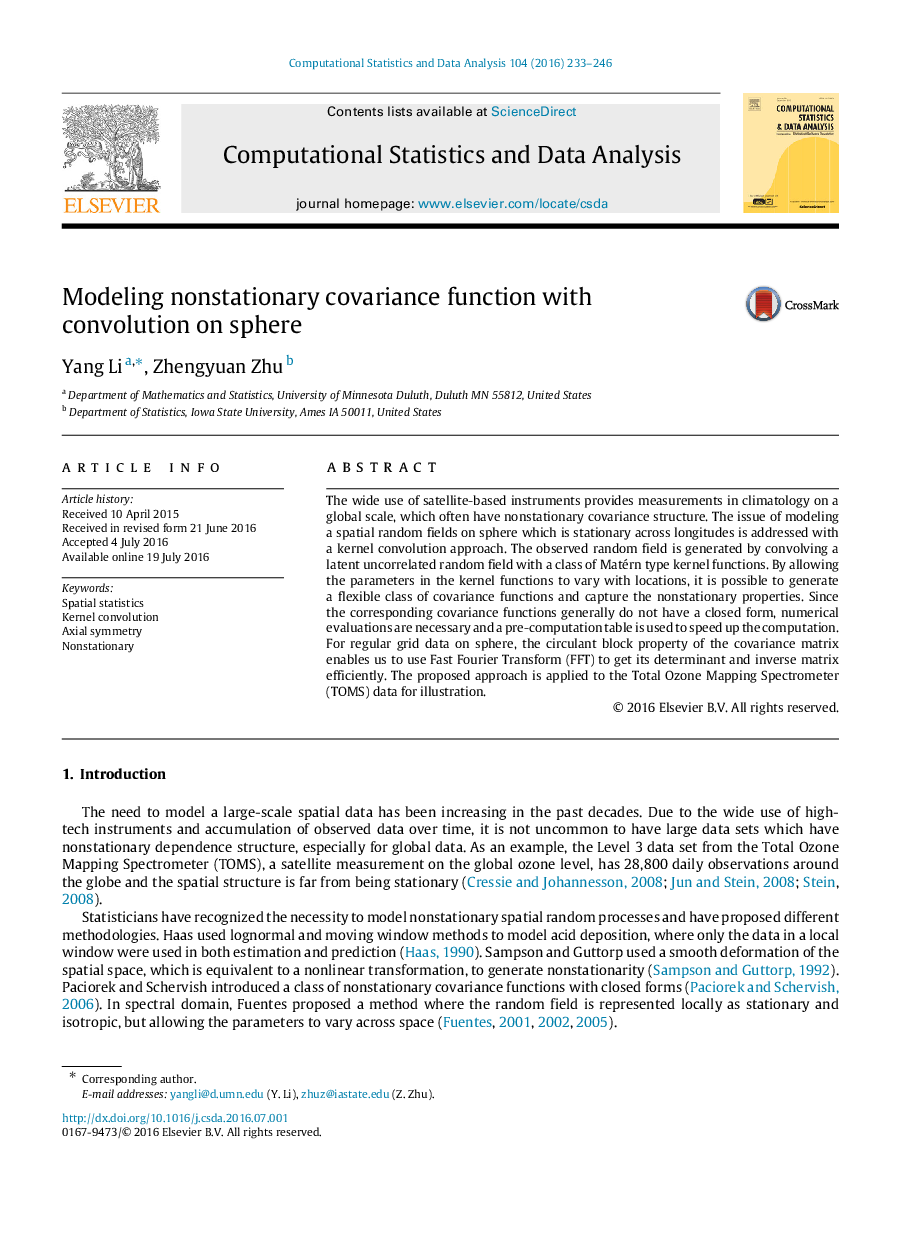| Article ID | Journal | Published Year | Pages | File Type |
|---|---|---|---|---|
| 6868963 | Computational Statistics & Data Analysis | 2016 | 14 Pages |
Abstract
The wide use of satellite-based instruments provides measurements in climatology on a global scale, which often have nonstationary covariance structure. The issue of modeling a spatial random fields on sphere which is stationary across longitudes is addressed with a kernel convolution approach. The observed random field is generated by convolving a latent uncorrelated random field with a class of Matérn type kernel functions. By allowing the parameters in the kernel functions to vary with locations, it is possible to generate a flexible class of covariance functions and capture the nonstationary properties. Since the corresponding covariance functions generally do not have a closed form, numerical evaluations are necessary and a pre-computation table is used to speed up the computation. For regular grid data on sphere, the circulant block property of the covariance matrix enables us to use Fast Fourier Transform (FFT) to get its determinant and inverse matrix efficiently. The proposed approach is applied to the Total Ozone Mapping Spectrometer (TOMS) data for illustration.
Related Topics
Physical Sciences and Engineering
Computer Science
Computational Theory and Mathematics
Authors
Yang Li, Zhengyuan Zhu,
